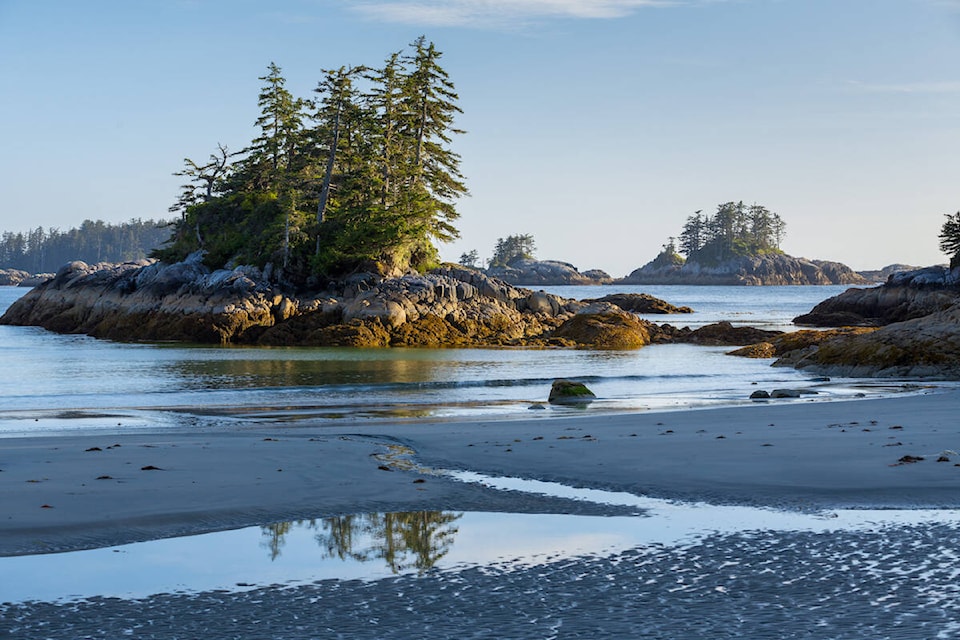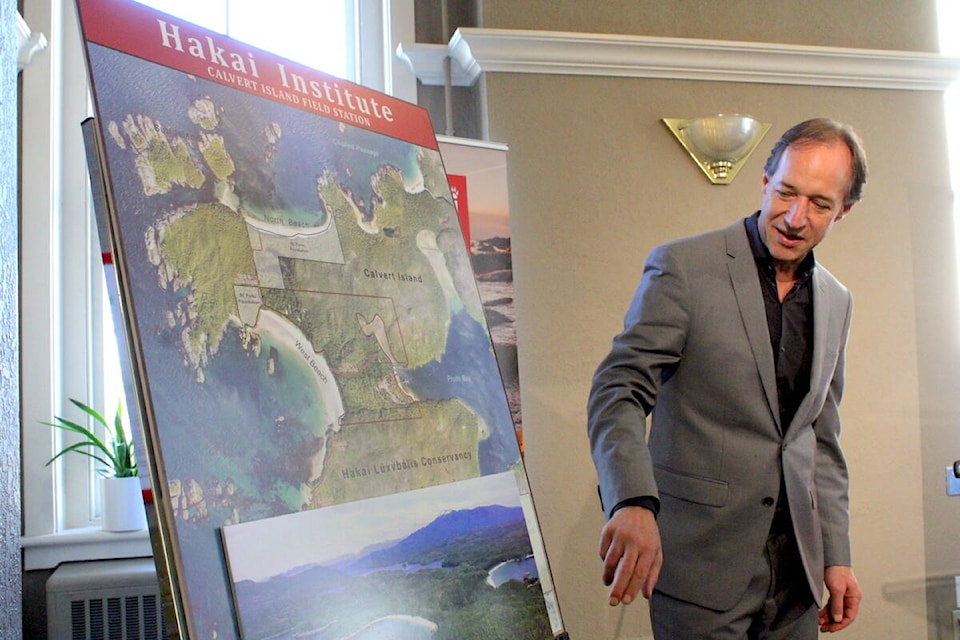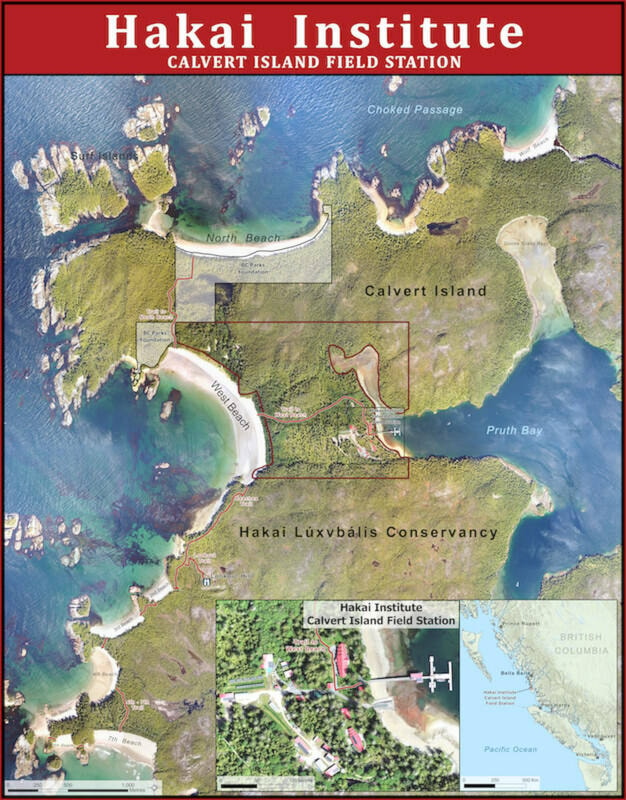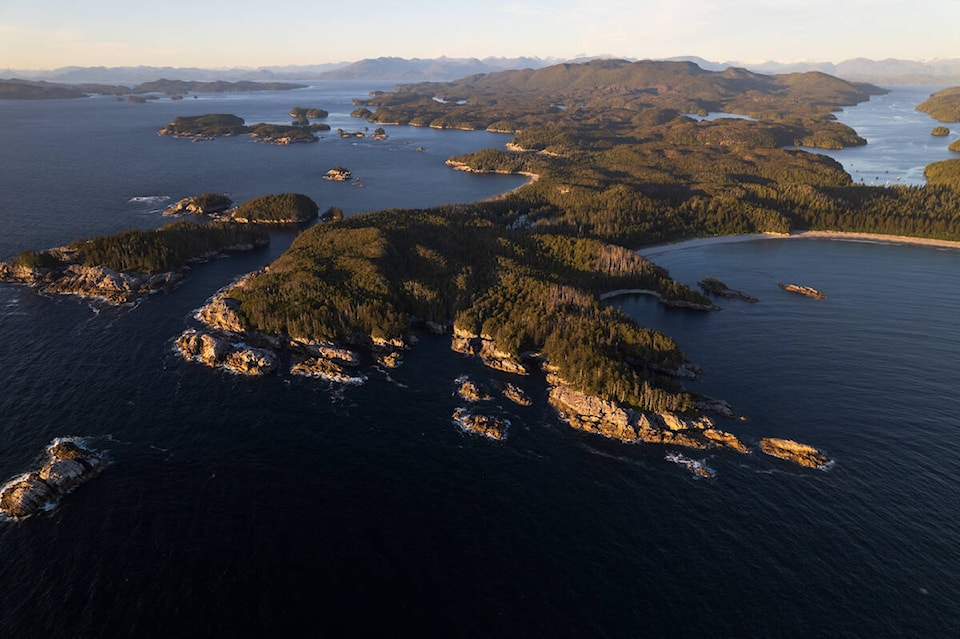After its abundant biodiversity has been stewarded by First Nations for thousands of years and it’s been eyed for pristine parkland for a century, parts of an island off B.C.’s Central Coast are closer to being protected forever.
At a March 13 ceremony in Victoria, Tula Foundation founders Eric Peterson and Christina Munck announced they would be transferring two parcels, totalling 55 acres, of Calvert Island to the BC Parks Foundation.
The land will be incorporated into the island’s Hakai Luxvbalis Conservancy, which is collaboratively managed by the province and the Heiltsuk and Wuikinuxv First Nations.
The founders also announced a donation of $92 million to Tula in support of the organization advancing its scientific innovation.
READ MORE: B.C. couple gives away last $92M, wants others to pick up the baton
Peterson called Calvert Island the most iconic place on B.C.’s coast as it features breathtaking beaches and incredible biodiversity. It’s also a sacred place for First Nations, he said, noting inhabitants have gathered on the land for over 10,000 years.
“It’s not just any piece of real estate, it’s an extraordinary place,” the Tula founder said, highlighting the island’s complex coastlines carved by glaciation and how it sits among a labyrinth of land and sea along the Central Coast.

Those comments were echoed by Andy Day, the BC Parks Foundation’s CEO, as he touted the incredible stretch of beach and ecology that make up the donated plots. With the site also hosting rich old-growth forests, Day said the Calvert lands are emblematic of the province’s ecological bounty.
Species are under threat around the world, Day said, adding 70 per cent of the world’s biodiversity has been lost in the last 50 years. Protecting land in perpetuity though actions like the Calvert donation is among the only ways to address that crisis, he said.
“Along with First Nations people and the province of British Columbia, we will make sure that it continues to be managed responsibly for all British Columbians to enjoy and for all the species in that area to enjoy,” Day said.
The CEO hopes the move inspires people to connect with B.C.’s natural areas and spurs other land donations.

The gifted plots have had a complex and fraught history, Peterson explained. Archaeological findings show signs of human settlement on the island from 13,000 years ago and around 5,000 years back, it hosted industrial-scale shellfish agriculture with clam gardens, processing areas, drying racks and trading sites.
First Nations oral histories recount a settlement known as Luxvbalis that was visited by Captain Vancouver. Luxvbalis was devastated by the smallpox epidemic of 1862 and many of the dead were abandoned in one of the island’s bays.
“There’s many souls from many Nations that have never been properly mourned in this place,” Peterson said.
The donated lands were surveyed after the First World War and a group envisioned it as protected parkland around 1925. The sites welcomed gathering and recreation for the next 40 years as they were effectively used as a park, but were then bought after the protections were never made official, Peterson said.
The sites were then logged for their cedar giants before they were taken over in the ’90s to host a beach resort. That resort created friction with First Nations, other neighbours and BC Parks as the area was closed off from the public. Those tensions escalated in the 2000s under a new U.S. owner who gated the land.
Since Tula bought the plots in 2009 and reopened them to the public, Peterson said he’s thrilled by their current partnership with neighbouring First Nations and he hopes to start conversations with them and all levels of government on transferring a third Calvert property.
“They can be assured now that the future of these two parcels is secured for everyone to enjoy,” Peterson said.
The Tula Foundation’s Hakai Institute hosts an ecological observatory on Calvert Island that has opened research opportunities to those like Brian Starzomski.
He’s one of the many University of Victoria researchers to study at the facility, and said the chance to work there has been lifechanging for scores of students.
“The most amazing things would happen at this place,” he said, recounting scientists from diverse disciplines debating the origins of Calvert’s geography while they dined together at the island.
“So many great research programs and papers came out of these discussions, it’s one of Eric and Christina’s great skills, they bring people together and support them with everything they need to do amazing things.”

READ: Citizen scientist’s fight for bird habitat access denied



